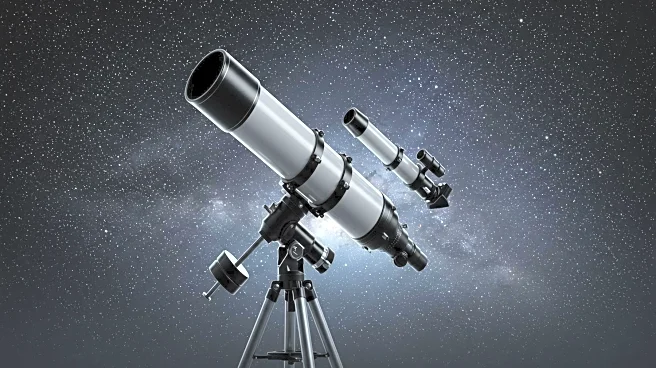What's Happening?
Scientists using the James Webb Space Telescope (JWST) have discovered the earliest known black hole, located in the galaxy CAPERS-LRD-z9, which existed just 500 million years after the Big Bang. This black hole is approximately 38 million times more massive than the sun and is believed to have as much mass as about 5% of all the stars in its galaxy. The discovery of CAPERS-LRD-z9 provides valuable insights into the conditions of the early universe and challenges existing theories about the formation and growth of black holes. The study, published in the Astrophysical Journal Letters, highlights the unique properties of 'Little Red Dot' galaxies, which emit red light and may contain black holes at their centers.
Why It's Important?
The identification of CAPERS-LRD-z9 as the earliest confirmed black hole offers significant implications for understanding the evolution of the universe. It suggests that black holes in the early universe may have grown much faster than previously thought or started out more massive than current models predict. This discovery could lead to a reevaluation of cosmological theories regarding the formation of galaxies and black holes. Additionally, the study of 'Little Red Dot' galaxies may reveal new information about the distribution and characteristics of early black holes, potentially impacting future astronomical research and technology development.
What's Next?
Further studies of CAPERS-LRD-z9 and similar galaxies could provide more detailed information about the early universe's black holes and their growth patterns. Researchers may use the JWST to investigate other 'Little Red Dot' galaxies to determine if they also contain black holes, which could lead to new discoveries about the universe's formative years. The ongoing analysis of these galaxies will likely contribute to refining models of cosmic evolution and the role of black holes in galaxy formation.
















